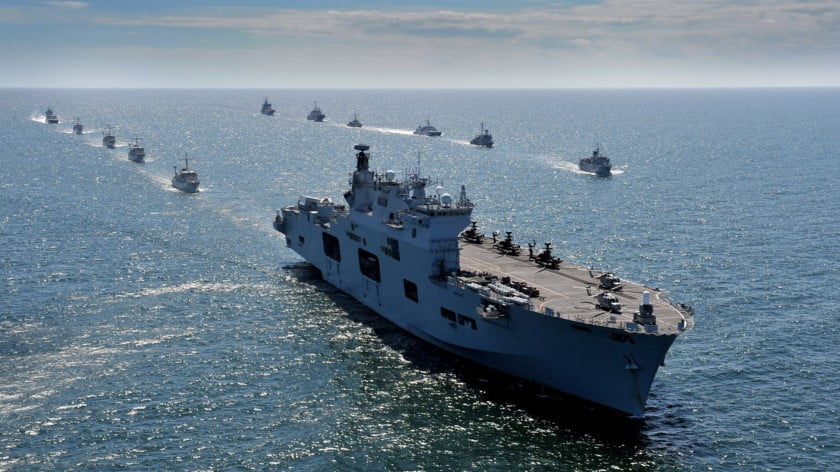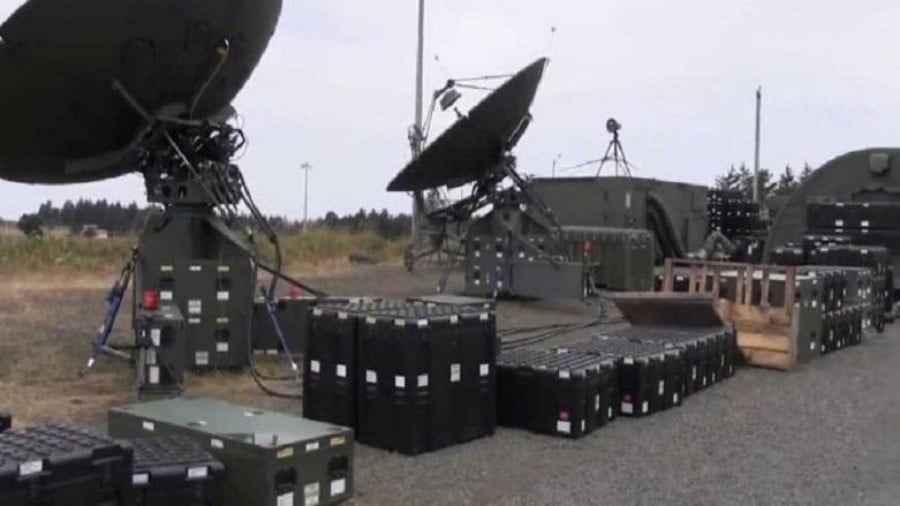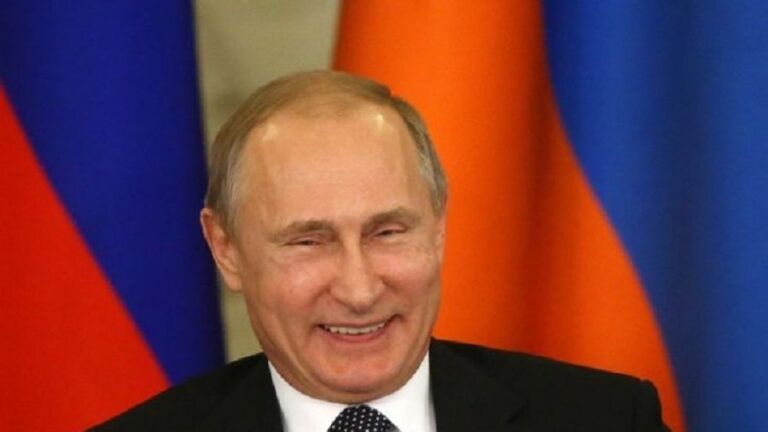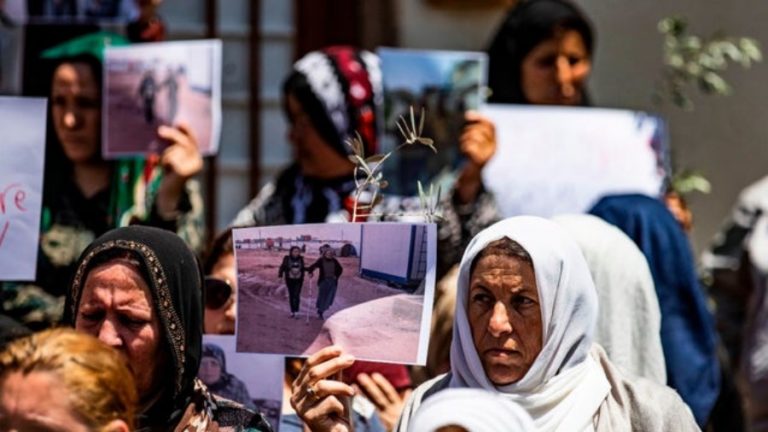The West vs Russia: The Baltic Front
In the current confrontation between the West and Russia, there is one region that has been an arena of conflict for centuries, and that region is the Baltic states. Its complex characteristics reflect the interests of numerous players, often including those that have nothing to do with it, such as America.
Muscle flexing
In June 2019, the 47th BALTOPS 2019 exercise was carried out by NATO in the Baltic Sea. Eighteen nations took part, the headquarters were located in the German port city of Kiel, and the manoeuvres were led by the US Navy’s Second Fleet. The Second Fleet itself is based in Norfolk, West Virginia, but this didn’t stop the US military controlling its European satellites remotely.
The exercise involved a total of 8,600 people. It is telling that countries like Sweden and Finland, which are neutral in terms of military alliances, also took part in the manoeuvres, calling into question their (essentially fake) neutrality. It is also important to note that the concept of a multinational command of amphibious groups previously developed by NATO was tested in practice for the first time.
The idea of creating a joint expeditionary force for the maritime space in the northern latitudes belongs to the United Kingdom, which developed the concept back in 2012, so it is serving as the lead country in its realisation. It was adopted as a special doctrine with minor changes at the 2014 NATO Summit, and, in 2018, the corresponding Memorandum of Understanding was signed between the United Kingdom, Denmark, the Netherlands, Norway, Estonia, Latvia, Finland, and Sweden. Now, the range of its coverage extends not just to the North Sea, but to the Baltic Sea as well.
But what is the real purpose of this doctrine? You don’t have to be an expert to see that the amphibious groups involved in the expeditionary forces are not being used for defence purposes. These troops are needed to attack and capture territory from the sea and air. So who were the NATO member states planning to attack in the Baltic Sea, given that the “neutral” Swedes and Finns were also involved in these manoeuvres? By process of elimination, there is only one country left, and that country is the Russian Federation.
According to Royal Marines Brigadier Matt Jackson, commander of 3 Commando Brigade, increased Russian naval activity is making some in Northern Europe feel less secure, so this first deployment is meant to show that “the JEF may be able to act before NATO can”.
And it is highly significant that Sweden and Finland are being drawn into the Euro–Atlantic military and political alliance. The joint expeditionary forces have become a kind of middle link between the monolithic NATO and these two countries in the region.
It should also be noted that BALTOPS-2019 was part of a wider programme called the Baltic Protector, the first phase of which began on 24 May and the third, final phase ended on 9 June. In the Baltic Protector, the lead role is being played not by the US, but by the UK.
It should be added that NATO created a new Baltic command structure in 2018 in the form of a multinational division. The staff became operational last autumn in Elblag, Poland, with plans for the deployment of 300 military personnel to the two hubs in Latvia and Denmark by 2020. And it goes without saying that, from a military–strategic point of view, the word Baltic doesn’t just refer to the sea, but to the land and airspace as well.
The US regularly points its finger at Kaliningrad as a source of possible problems related to denial of access. The well-worn “Russian threat” is just a cover to scale up the number of NATO bases and installations in the region. In this regard, there is a risk that Sweden’s Gotland island and Finland’s Åland Islands, which have a special demilitarised and autonomous status, could be affected by the changes. The Åland Islands are of strategic importance since they are situated in the middle of the Gulf of Bothnia between Sweden and Finland. And, since 2016, an armoured infantry company has once again been stationed on Gotland island, which lies opposite Kaliningrad Oblast. Although the military presence is minimal, there is nothing to stop the deployment of strategic weapons to the island.
In light of comments by Major General Andrei Sterlin, head of the Main Operational Directorate of the Russian military’s general staff, that NATO is creating an offensive fist on Russia’s borders, the activities being carried out as part of NATO’s Baltic exercises cannot but cause concern.
If we rule out the Baltic Sea as a theatre of operations, then military force could also be used for various acts of provocation.
The geopolitics of energy resources
There is no doubt that the Baltic region is also affected by geoeconomic realities. It is not just a matter of cargo transportation, but also energy resources, since branches of the Nord Stream 1 and Nord Stream 2 pipelines run along the bottom of the Baltic Sea. And despite the fact that the gas is being delivered to Europe, certain interested parties may be trying to sabotage it.
Russian gas has long been a major geopolitical problem for the region. The most interested party in stopping the flow of hydrocarbons from Russia is America. And despite constantly telling its European partners that Nord Stream 2 is a terrible idea and will only increase Europe’s dependence on Russian gas, the US cannot offer anything in its place.
In 2019, US Congress has already prepared a law on sanctions against European companies that will cooperate with Russia in the construction of pipelines. A number of US experts believe the move will merely serve to undermine transatlantic relations between the US and the EU, however, while the German foreign minister openly criticised the US, stating that “questions of European energy policy must be decided in Europe, not in the US”.
At the last moment, Denmark proved to be the stumbling block regarding permission to construct part of the second branch of Nord Stream 2. Changing the route could delay putting the pipeline into operation.
A network of satellites
But while Europe’s geopolitical heavyweights can still try to deal with Washington on an equal footing, the EU and NATO’s less significant members can do nothing more than pander unquestioningly to their transatlantic master’s every whim. They could be used as troublemakers or as potential victims whose protection would require extraordinary measures, and the countries most likely to play this role are the Baltic states. They have cause to complain about Russia’s presence by way of the ethnic Russians living in Latvia, Lithuania and Estonia. They regularly present this to the US and NATO as one of the reasons for future “Russian aggression”. To make up for their lack of intelligence and imagination, the politicians in these countries use yet another anti-Russian track – the glorification of Nazi Germany’s allies by organising marches for Waffen-SS veterans and other such events. They are hoping their actions will provoke a reaction from Moscow so that they will be able to say Russia is interfering in their internal affairs and complain to Uncle Sam. Since Russia will be unable to remain silent about the rights of ethnic Russians being infringed and the Nazification of the Baltic states, there will inevitably be an escalation in relations.
NATO is also a serious element that is actually not just used as a deterrent, but also as a way of conducting an information war against Russia.
NATO not only has a military infrastructure based on its member nation-states, but also a network of special centres that are actually scattered throughout Europe despite being under the formal jurisdiction of NATO headquarters in Brussels. This mechanism allows for a firmer foothold to be established in other countries and, as well as getting military professionals involved in NATO’s processes, it also gets civilians involved, and not just those from NATO member countries either. To accomplish this, NATO uses the method of strategic communication – a complex approach that combines education, mass manipulation techniques, propaganda, science, and security.
The Baltic states are a typical example of this policy of entrenchment, with three specialist centres opened in Latvia, Lithuania and Estonia. They are called centres of excellence and deal with specialised areas.
NATO has a total of 19 fully functioning centres, with a further three in the making. In this article, however, we are just going to look at three of them.
The NATO Cooperative Cyber Defence Centre of Excellence is the first organisation of its kind in the former Soviet Baltic states. It is located in the Estonian capital of Tallinn. NATO representatives and US experts often suggest that the decision to establish such a centre in Estonia was related to the incident surrounding the statue of a Soviet soldier in 2007. Russian hackers allegedly destroyed Estonia’s cyber infrastructure – banks were unable to function and the web servers of various public services were paralysed. In truth, however, the request to establish a cyber centre in Tallinn was made much earlier – back in 2004, immediately after the country joined NATO. NATO’s high command finally approved the request in 2006 and talks on establishing the centre began in 2007.
The first memorandum was signed in May 2008, and NATO funding began after the centre was awarded full accreditation in October 2008, when it was also awarded International Military Organisation status.
And this begs the question – was the myth about Russian hackers an extra bit of propaganda that secured sustainable funding for the centre from the EU’s main donors? Given the sharp spike in articles on the subject in Western newspapers from 2007 onwards, and the fact that NATO experts and various political think tanks in Western Europe and the US all began talking about “Russian interference” and the need to establish effective security measures, this is probably a reasonable assumption.
The creation of the so-called Tallinn Manual on cyber warfare is also linked to the centre. Although this study merely offers expert opinions and is not a field manual or strategy, the West often refers to it as a general set of rules for engaging in cyber campaigns in the event of a conflict.
The centre provides technical training to specialists and organises courses on legal issues relating to cyber campaigns. In this regard, it is worth remembering that clear international Internet rules recognised by every UN country, or by global politics’ biggest players at the very least, have still not been worked out. And the work of the Tallinn centre aims to monopolise the exclusively Western legal point of view on the issue.
To this end, the centre’s website publishes information on the subject that also justifies NATO’s approach to the issue of cyber security.
In addition, the centre has regularly been carrying out cyber manoeuvres since 2012, which, bearing in mind the Internet’s inherently global nature, are not limited to NATO member states.
In 2012, the NATO Energy Security Centre of Excellence was established in the Lithuanian capital of Vilnius. Its mission is to assist NATO Strategic Commands and other subdivisions, member states and partners, while its main objective is to provide expertise on all aspects of energy security, including solutions to support military requirements and interaction between academia and industry.
The centre organises courses and offers internship programmes (tuition and living expenses are covered by NATO).
It also publishes specialist magazines and research results that often mention the need to get rid of “energy dependence on Russia”.
Russia’s threat to Ukraine’s energy security has been a recurring theme in recent issues, although other former Soviet countries are also mentioned, as well as Europe itself.
While not included in the centre’s official objectives, the leitmotif of an “energy war” with Russia is clear not just in the materials published, but in the events held as well. Constant attempts to draw countries into NATO’s orbit that are not part of the alliance but which border Russia are also noticeable.
For example, the Innovative Energy Solutions for Military Applications Conference held in November 2018 was organised in cooperation with the Ministry of Defence of Georgia.
The NATO Strategic Communications Centre of Excellence, another of NATO’s new subdivisions, is based in Riga. It became functional in January 2014 and was awarded NATO accreditation on 1 September 2014. Its sponsoring nations are Estonia, Germany, Italy, Latvia, Lithuania, Poland, and the United Kingdom.
As stated on the centre’s website, its activities and capabilities are public diplomacy; working with the media to raise awareness of NATO activities; military public affairs; information operations; and psychological operations.
It is considered of particular importance given the complex nature of the tasks performed.
The centre hosts regular conferences and publishes magazines and special research reports. There are a wide variety of subjects covered: the weaponisation of memes; ISIS’s information warfare strategy; the narratives of extremist organisations; EU security; cyber warfare; nationalism; biometric technologies; and so on. Special attention is also paid to Russia.
In November 2016, two analytical documents were published devoted to Russia – “When Hybrid Warfare Supports Ideology: Russia Today” and “The Kremlin Playbook. Understanding Russian Influence in Central and Eastern Europe”.
Prior to these, there was material on “Russian interference in Ukraine”, sanctions, information technologies in the Russian army, working with European NGOs, and so on.
Such publications reached their peak in 2015 and 2016.
It is telling that these materials are alternated with similar studies on terrorist organisations and extremist groups. This is done intentionally so that the centre’s target readers and others subconsciously make a connection between these research topics.
In addition, the use of material by partners such as the RAND Corporation; the Center for Strategic and International Studies in Washington; Chatham House, the Royal Institute of International Affairs; and special research centres in NATO countries gives the impression of mutual trust and common interests, and also helps to fill the website with content.
It is interesting that the centre itself was established just before the uprising in Ukraine, when the country was already gripped by protests being supported from abroad.
In addition to their particular areas of focus, all three centres are part of NATO’s network and act as political fulcrums that have both an ideological and a social impact on the citizens of these countries.
By Leonid Savin
Source: Oriental Review







